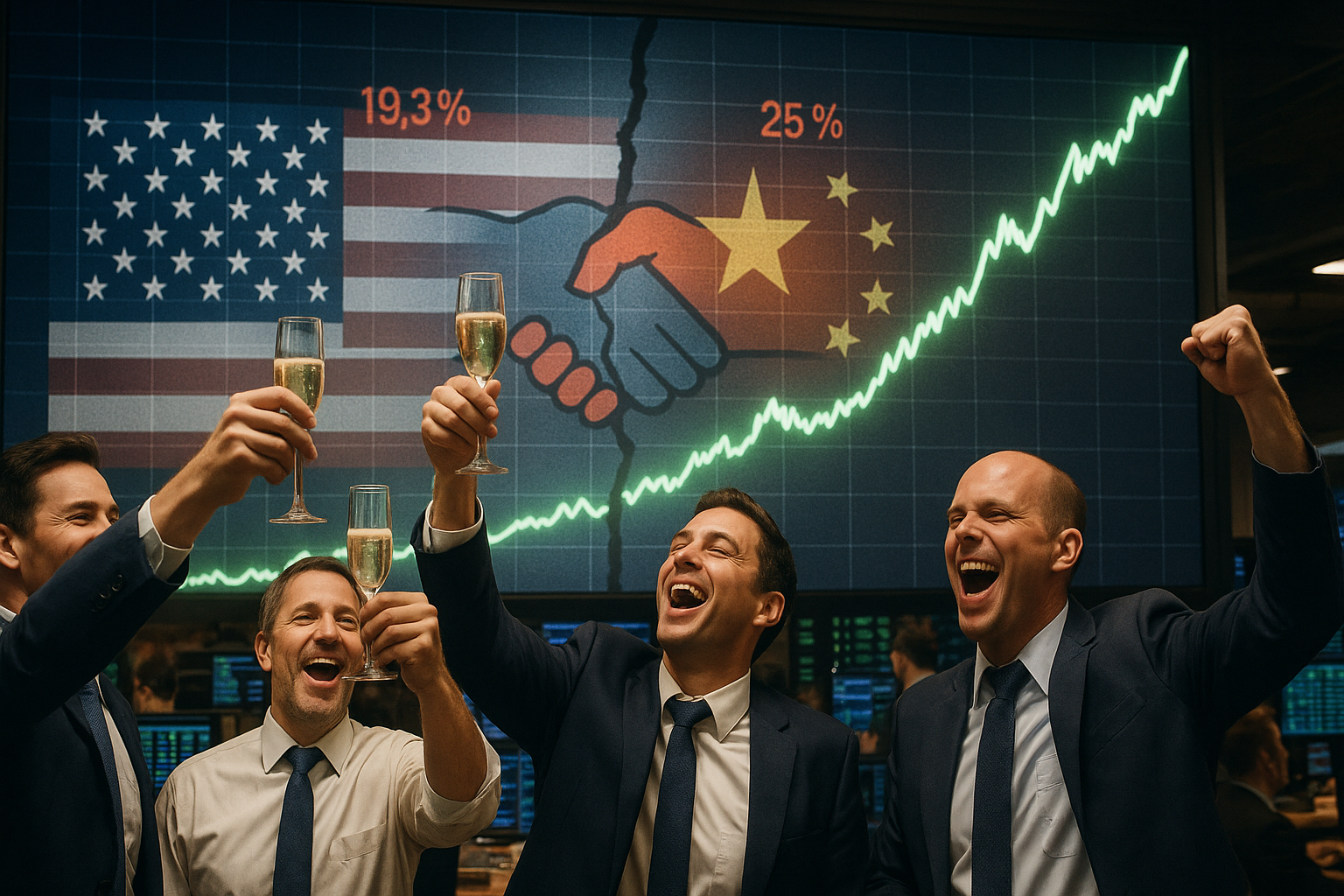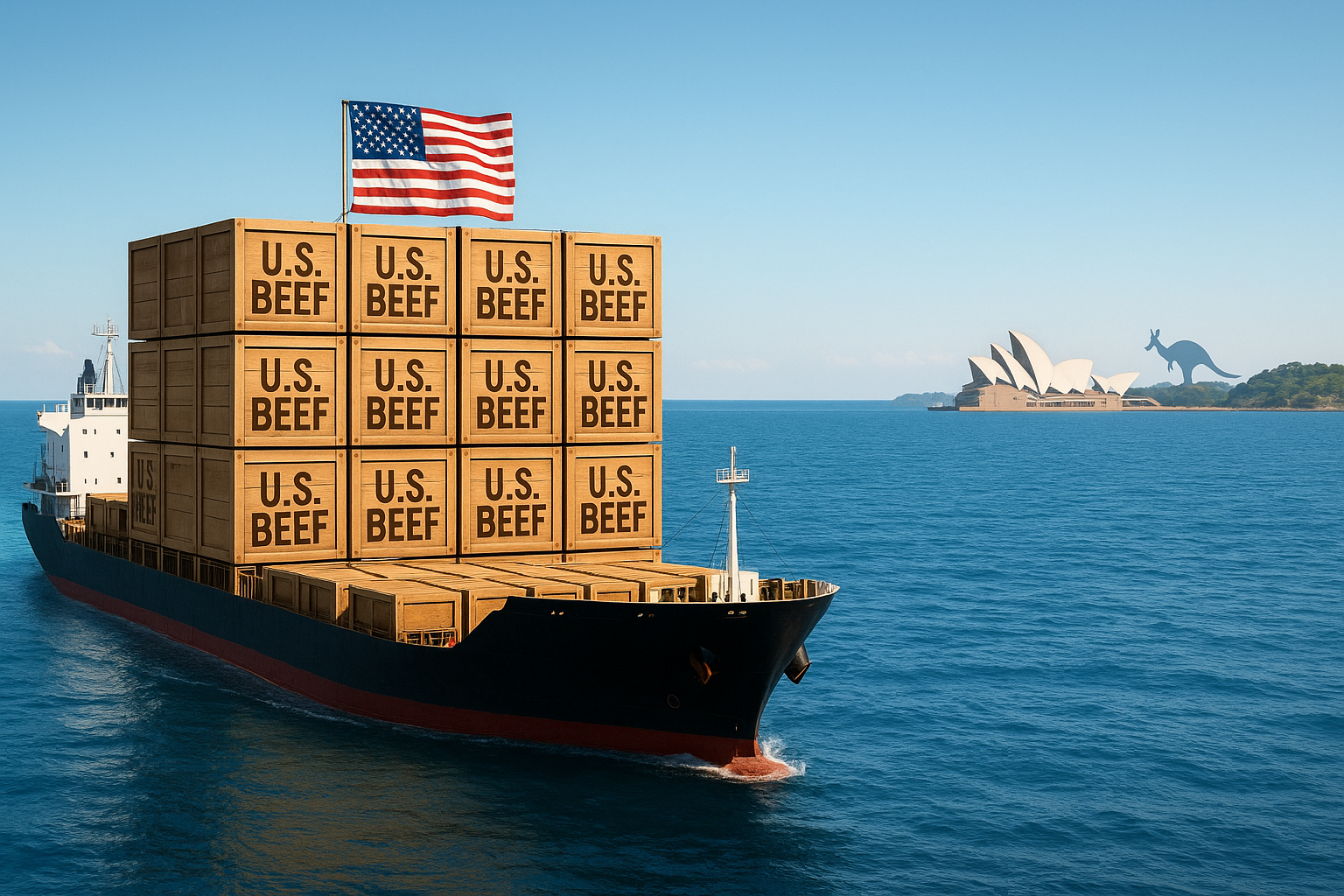Wall Street threw itself a little party yesterday. The cause for celebration? Whispers—and at this point, that's really all they are—of a potential thaw in the U.S.-China trade relationship.
Stocks surged across the board. Tech giants rallied. Small-cap manufacturers jumped. Even companies with minimal China exposure got swept up in the buying frenzy. It was, frankly, the kind of indiscriminate optimism that makes veteran market watchers raise an eyebrow.
Look, I understand the excitement. After years of watching these two economic behemoths circle each other like heavyweight boxers who can't quite commit to throwing the first punch, any hint of reconciliation feels like cause for celebration. Traders, eternally optimistic bunch that they are, seized on the news like a drowning man grabbing at driftwood.
But here's where things get complicated.
Trade deals—real, substantive trade agreements—aren't announced and implemented overnight. They're messy, contradictory affairs that usually end up disappointing everyone involved to some degree. I've covered international trade for nearly a decade, and if there's one pattern I've observed consistently, it's what I'd call the "announcement versus implementation gap."
It goes something like this: markets price in perfection at announcement, then reality delivers... something else entirely.
The current tariff situation isn't some minor irritation that can be waved away with a press release and a handshake. Chinese goods face average duties of 19.3%—more than six times higher than pre-trade war levels. Even the most optimistic scenarios being floated (and I've spoken with several analysts close to the negotiations) suggest reducing these to perhaps 12-15%.
That's improvement, sure. But it's still triple what importers faced before 2018.
And timing? Don't get me started. These negotiations have produced more false dawns than a Swedish winter. Remember the much-hyped "Phase One" deal? That was supposed to be the appetizer before a more comprehensive agreement. We're still waiting for the main course. (And no, the waiter isn't coming with it anytime soon.)
What really strikes me as odd about the market's reaction is how it conveniently ignores the emerging bipartisan consensus on China policy. Being "tough on China" is perhaps the only thing that unites Washington these days—apart from a fondness for lobbyist lunches and avoiding difficult votes.
This political reality creates constraints that no administration can simply ignore. Making concessions without securing visible wins is practically political suicide. And that's before we even consider the national security dimension that has increasingly colored trade policy.
I had coffee last week with an executive from a major consumer goods company. Off the record, he admitted something revealing: "We tell Wall Street we've absorbed most tariff costs through 'supply chain efficiencies,'" he said with air quotes and a knowing smile. "Then we turn around and tell Washington those same tariffs are killing us. Both can't be true."
That contradiction gets to the heart of how companies have navigated this uncertain landscape—with one message for investors and another for policymakers.
To be fair, some sectors would benefit meaningfully from even partial tariff relief. Consumer goods manufacturers, agricultural exporters, and certain segments of manufacturing could see genuine margin improvements.
But the notion that we're heading back to the pre-2018 trade relationship? That's a fantasy. That world doesn't exist anymore.
What's more likely is that we're entering an era of what diplomats might call "managed tension." Trade policy has become inseparable from broader geopolitical strategy. It's no longer just about economics—it's about technological supremacy, national security, and global influence.
So while traders pop champagne over potential tariff reductions, the smart money might focus on structural shifts that will persist regardless. Supply chain diversification, "friendshoring," increased domestic manufacturing capacity—these trends aren't reversing because of a partial rollback of tariffs.
The trade war may see occasional truces. But the broader economic Cold War? That's just getting started.
And that's a reality no announcement—no matter how well-received by the market—can change.




